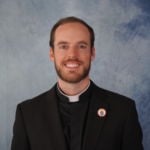
Catholics and Latter-Day Saints (LDS, or Mormons) both believe that the Bible is the word of God, and both have a great zeal for understanding Scripture. Yet we interpret the Bible in vastly different ways. One teaching that separates us is the LDS teaching called the Great Apostasy (also known as the Falling Away). It is a central teaching to the LDS faith.
The LDS book Preach My Gospel, a manual for Mormon Missionaries, explains the Great Apostasy as follows: “Most people rejected Jesus Christ and his apostles. . . . After the deaths of the apostles, the priesthood was lost from the earth. There was no longer authority to baptize or to direct the Church.” In other words, the LDS believe that after the death of the last apostle, the church fell into total error until Joseph Smith restored it in the 1800s. (We will not treat here the LDS belief that St. John the Evangelist is still alive.)
The LDS believe that Joseph Smith, their founder, restored the gospel of Jesus Christ. But if the church didn’t fall into total apostasy, then there would be no need for a restoration, which means no need for Joseph Smith’s mission.
The most convincing argument for the Great Apostasy that I heard from the LDS when I lived in Utah was the argument from Amos 8:11-12:
“Behold, the days are coming,” says the Lord GOD, “when I will send a famine on the land; not a famine of bread, nor a thirst for water, but of hearing the words of the LORD. They shall wander from sea to sea, and from north to east; they shall run to and fro, to seek the word of the LORD, but they shall not find it.
Even a Catholic with knowledge of the Gospels, the rest of the New Testament, and the Pentateuch would have insufficient knowledge to combat this argument, and so it might sound plausible. But proper knowledge of the Book of Amos—its historical and literary context and its place in the broader span of Scripture—will show the LDS position to be untenable.
Amos, one of the minor prophets spanning from Hosea to Malachi, was writing before the year 700 B.C. according to the book’s internal evidence and to archeological evidence.
Amos is often thought to be the earliest of all the literary (writing) prophets, since his relatively short ministry probably fell in the decade 770-760 B.C. The opening lines date his prophecy to “two years before the earthquake” during the reigns of Uzziah of Judah and Jeroboam II of Israel (Amos 1:1). Archeologists now estimate that this event took place around 760 B.C. (plus or minus twenty-five years) (Vol. 1, 913-914).
This means that for Amos, Jesus would not be born for about another seven hundred years. That is a large window in which Amos 8:11-12 could have been fulfilled—and if the apostasy Amos wrote about was fulfilled within that time frame, then he must not have been writing about the LDS Great Apostasy.
As Catholics and students of the Bible, on one level, we can agree with the LDS. Amos did prophesy that an apostasy was coming. But did he prophesy that it would happen after the time of Jesus? Now, that’s another question.
First, let’s consider that the Book of Amos doesn’t end with chapter 8 and its warning of apostasy. It continues with chapter 9, where God says,
“In that day I will raise up the booth of David that is fallen and repair its breaches, and raise up its ruins, and rebuild it as in the days of old; that they may possess the remnant of Edom and all the nations who are called by my name,” says the LORD who does this.
With that in mind, let’s move to the New Testament, to the Acts of the Apostles.
I’ll give you some background. In Acts 15, the Church holds its first council, called the Council of Jerusalem. This sets the precedence for future Church councils (a relevant topic in Catholic-LDS dialogue, because the LDS do not accept other early Church councils as authoritative). The Church is presented with a theological question: do Gentiles who convert to Christianity need to be circumcised? The leaders of the Church decide in the negative: whereas circumcision belonged to the Old Testament law, it is not required in the Catholic Church.
Jesus did not answer this question. Instead, he left it to his apostles and to Church leaders to figure out. It required what St. John Henry Newman called doctrinal development.
And so, in Acts 15, Peter declares that the gentile Christians do not need to be circumcised. Then James speaks up:
Brethren, listen to me. Symeon [Peter] has related how God first visited the Gentiles, to take out of them a people for his name. And with this the words of the prophets agree, as it is written . . .
James then quotes Amos 9:11-12. This has major significance in the Catholic debate with the LDS, because it shows us that the apostolic Church considered itself the fulfillment of Amos’s prophecy. That means that, according to the earliest leaders of the Church, the apostasy of Amos 8:11-12 must have happened before the time of Christ and the apostles. Therefore, Amos couldn’t have been writing about the LDS Great Apostasy, as LDS missionaries are instructed to teach. If he had been, then the apostles, if anything, would have been much more likely to warn against the coming apostasy—or already to have succumbed to it unknowingly!
The LDS, trying to prove the Great Apostasy, can’t quote from the generation of Christians after the death of the last apostle precisely because they believe that the church had already fallen into total error by then. But the argument from Acts 15 appeals to apostolic times. An apostle, in the presence of other apostles, contextualizes the Book of Amos about as definitively as any Catholic could want. Bergsma and Pitre explain,
This theological understanding of the relationship of the kingdom of David and the Church is important to grasp, because it provides the biblical basis for many of the external and hierarchical aspects of the Church’s structure—for example, the exercise of authority in a Church council by Church leaders, as at the Council of Jerusalem (950).
Acts 15 and the Council of Jerusalem cut the legs out from under the LDS appeal to Amos to prove the Great Apostasy. But for anyone who needs more convincing, consider the argument from an ancient Church writer of great apologetical standing: Tertullian.
Grant that all have erred . . . [that Christ] permitted the churches for a time to understand otherwise and to believe otherwise than he himself had preached through the apostles. Now, is it likely that so many and such great churches should have gone astray into a unity of faith?
For Tertullian, the LDS Great Apostasy is disproved because the Catholic churches were united in one faith with the same teachings. He wrote this 1,600 years before the time of Joseph Smith, and he lived about a hundred years after the death of the last apostle.
We have here considered the Great Apostasy: what it means to the LDS and a Catholic response. Whereas the LDS see in Amos 8:11-12 a prophecy of a great apostasy occurring after the time of Jesus, studying the Book of Amos shows that Amos’s apostasy was fulfilled before the time of Jesus. In the Acts of the Apostles, the Catholic Church established a visible church hierarchy to lead the Church through difficult questions.
Jesus didn’t abandon the Catholic Church after the death of the last apostle. Instead, he has guided it—and us—through the last 2,000 years, through the leadership of the pope and the bishops, as we see at the Council of Jerusalem in Acts 15.



